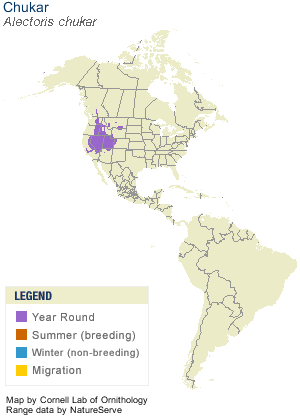Did you know that the Chukar was brought from India/Pakistan to the western United States as a game bird? Birds of North America Online informs me that in 1893 five pairs were released. Between 1931 and 1970 almost a million more Chukar were released in the United States and Canada. They seem to have survived in the arid west and have established strong self-sustaining feral populations. Chukar are still hunted extensively by hunters who like the physical challenge of chasing them up their preferred steep, rocky, and over-grazed habitat which is very common in the intermountain west.
 |  |
Chukar eat the seeds of cheatgrass. Although romanticized by Steinbeck in East of Eden in the lush Salinas Valley of California

 |
| Leslie Gulch - eastern Oregon - prime Chukar country |



...interesting. He definitely doesn't look like a native species. I love his markings...
ReplyDelete@Kelly - Chukar are pretty cool. Every once in awhile, folks will report them in town. I know that some hunters still raise and release them, so it isn't always easy to know if they are wild or not.
ReplyDeleteRobert, I so miss seeing chukar! They look like clown-faced birds to me! I love them!
ReplyDeleteBTW, you are not the only one who finds birds in or near parking lots! ;) Stop by to see what I mean!